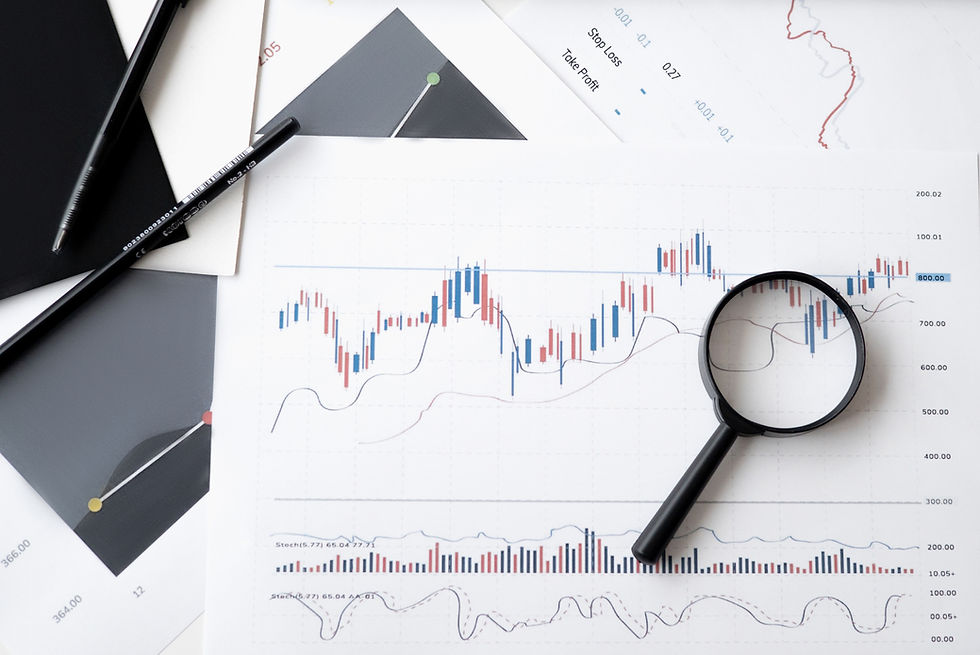Economic Profit vs Accounting Profit: The Role of Opportunity Cost in Business Accounting
- Anthony E
- Mar 14, 2023
- 4 min read
Updated: May 2, 2023
Understanding the difference between economic profit and accounting profit is essential for businesses when evaluating their performance and making strategic decisions. A key factor in distinguishing these two concepts is the role of opportunity cost. In this article, we will explore the concepts of economic profit, accounting profit, opportunity cost, and how they relate to one another. By the end of this post, you will have a better understanding of these and their implications for your business.
Opportunity Cost
Opportunity cost refers to the value of the next best alternative that is forgone when a decision is made. In the context of business, opportunity cost represents the benefits a company could have received by using its resources in a different way. It is an essential concept in economics and helps businesses evaluate the efficiency of their resource allocation.
Economic Profit
Economic profit is a measure of a business's financial performance that takes into account both explicit and implicit costs. Explicit costs are the direct monetary expenses a company incurs, while implicit costs represent the opportunity costs associated with using resources in a specific way. Economic profit is calculated by subtracting both explicit and implicit costs from total revenue.
For example, let's consider a business with a total revenue of $200,000, explicit costs of $100,000, and implicit costs (opportunity costs) of $50,000. The economic profit would be $200,000 - $100,000 - $50,000 = $50,000.
Accounting Profit
Accounting profit, on the other hand, is the difference between a company's total revenue and its explicit costs only. Accounting profits are typically reported on financial statements and are the most common measure of a business's profitability. Accounting profit is calculated by subtracting explicit costs from total revenue.
Using the example above, the accounting profit would be $200,000 - $100,000 = $100,000.
Economic Profit vs Accounting Profit
The main difference between economic profit and accounting profit is the inclusion of opportunity cost (implicit costs) in the calculation of economic profit. While accounting profit only considers explicit costs, economic profit takes into account the opportunity costs associated with resource allocation, giving a more comprehensive view of a business's financial performance.
In some cases, a business might have a positive accounting profit but a negative economic profit. This occurs when the opportunity costs (implicit costs) are higher than the accounting profits, indicating that the business is not using its resources as efficiently as it could be.
How to Calculate Economic and Accounting Profit
To calculate accounting profit, you simply subtract the explicit costs from total revenue:
Accounting Profit = Total Revenue - Explicit Costs
To calculate economic profit, you need to subtract both explicit and implicit costs (opportunity costs) from total revenue:
Economic Profit = Total Revenue - Explicit Costs - Implicit Costs (Opportunity Costs)
Understanding the difference between economic profit and accounting profit, and the role of opportunity cost, is crucial for businesses when evaluating their performance and making informed decisions. By considering both types of profit and opportunity cost, businesses can gain a better understanding of their overall financial health and identify areas for improvement.
A business should use both economic profit and accounting profit to gain a comprehensive understanding of its financial performance, resource allocation efficiency, and overall profitability. Each of these measures provides unique insights that can inform strategic decision-making and help identify areas for improvement.
Here's how and why a business should use economic profit and accounting profit:
Evaluating Financial Performance: Accounting profit, derived from a company's financial statements, offers a snapshot of the business's financial health by calculating the difference between total revenue and explicit costs. It helps businesses track their profitability and make comparisons with industry peers. Economic profit, on the other hand, provides a deeper understanding of financial performance by incorporating opportunity costs (implicit costs) in addition to explicit costs. This measure helps businesses assess whether they are maximizing the potential value of their resources.
Resource Allocation Efficiency: Economic profit accounts for opportunity costs, reflecting the value of alternative uses of resources. By comparing economic profit with accounting profit, businesses can identify inefficiencies in resource allocation and make informed decisions to optimize their operations. If a company's economic profit is consistently lower than its accounting profit, it may indicate that the business could allocate its resources more efficiently to generate higher returns.
Informed Decision-Making: Using both economic and accounting profit enables businesses to make well-informed strategic decisions. While accounting profit provides an accessible measure of financial performance, economic profit offers a more comprehensive view of the business's profitability, considering the opportunity costs associated with resource allocation. By examining both measures, businesses can identify areas for improvement, potential investments, and strategic adjustments that can enhance their overall financial performance.
Long-term Growth and Sustainability: Economic profit can help businesses assess their long-term growth prospects and sustainability. A positive economic profit indicates that a company is generating returns above its opportunity costs, suggesting that the business is creating value and has the potential for long-term growth. In contrast, a consistently negative economic profit may signal the need for strategic changes to improve the company's prospects and long-term sustainability.
In conclusion, businesses should use both economic profit and accounting profit to gain a holistic understanding of their financial performance and make well-informed strategic decisions. By considering both measures, businesses can optimize their resource allocation, identify growth opportunities, and enhance their long-term profitability and sustainability.
To get expert help and see what loan your business qualifies for you can apply online today and receive offers within 24 hours.




